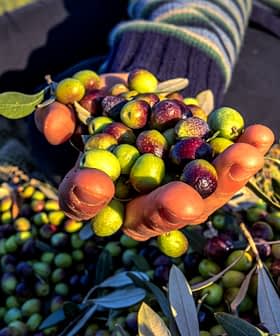Global olive oil production is expected to fall to 2.9 million tons in the 2022/23 crop year, according to the latest estimates published by the United States Department of Agriculture.
According to USDA data, production will fall by 11 percent compared to the previous crop year and finish 8 percent below the rolling five-year average.
The USDA attributed the production decrease to the anticipation of smaller olive harvests in the European Union, Morocco, Turkey and Tunisia. USDA economists mainly attributed the decrease to the natural alternate bearing cycle of the olive tree.
See Also:2022 Harvest UpdatesAlong with production, the USDA also expects global olive oil consumption to decrease by 7 percent due to lower supplies. The department added that the decline will likely be observed in the most price-sensitive countries.
However, domestic consumption is expected to remain strong in the European Union, which the USDA estimated will account for half of total consumption. After the E.U., the United States is expected to be the second-largest consumer with a 13 percent share.
The USDA also expects global exports to decline by 11 percent, attributing the drop in olive oil trade to lower yields in the largest producing countries.
In the European Union, exports are forecasted to fall by 75,000 tons to reach 825,000 tons in the 2022/23 crop year. Exports from Tunisia and Turkey are also expected to decline to 70,000 tons and 56,000 tons, respectively.
Logically, global imports also are expected to fall. E.U. imports are projected to drop 25,000 tons to finish at 175,000 tons. However, U.S. imports are expected to remain steady at 375,000 tons.
With production, exports and imports falling faster than consumption, global ending stocks are once again expected to tighten.
E.U. ending stocks are forecast to fall to a six-year low at 301,000 tons. Previous dips in the E.U. ending stocks have resulted in higher prices for producers in the 27-member bloc.
Looking at the sector more broadly, the USDA anticipates global oilseed production to rise in 2022/23, despite the shortage of sunflower oil resulting from the Russian invasion of Ukraine.
Bumper canola oil crops in Canada and the European Union combined with strong soybean production in South America means plenty of seed and vegetable oils will be able to fill the void left by Ukrainian and Russian sunflower seed oil output.
Production estimates for the 2022/23 crop year from the International Olive Council are expected in November.
USDA data is collected from a combination of open sources and interviews with government officials and agricultural associations. USDA economists forecast olive oil production by first estimating the amount of fruit that will be harvested in each country and multiplying the figure by the average oil yield percentage of the previous five seasons.








